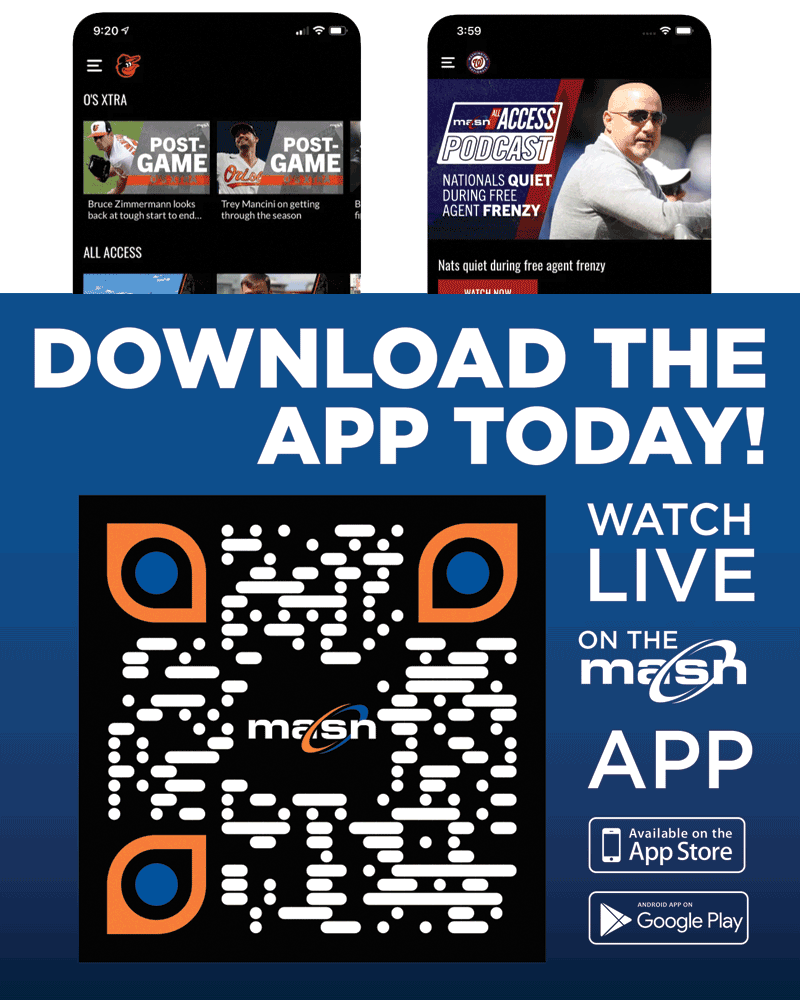We know the 2022 season wasn’t a success for the Nationals at the major league level. Was it at least at the minor league level?
It certainly was a season of improvement, not that the organization had anywhere to go but up.
The Nats entered 2021 with the lowest-ranked farm system in baseball according to MLB Pipeline. They moved up from No. 30 to No. 23 entering 2022, thanks to their July trades of Max Scherzer, Trea Turner and others, plus the drafting of Brady House and signing of top Dominican prospect Cristhian Vaquero.
Then came the 2022 trade deadline, and the blockbuster deal that sent Juan Soto and Josh Bell to San Diego for six players, five of whom were among the Padres’ top ranked prospects. That influx of talent, coupled with the drafting of Elijah Green, brought the Nationals’ ranking up to No. 15, the highest this system has been regarded in some time.
“I think our system’s different right now than it was a year ago,” general manager Mike Rizzo said. “I think it’s deeper. We’ve had two what I believe are successful trade deadline acquisition periods. We’ve had two successful drafts. We’ve done a good job in the international market. I think that our prospect depth is as good as it’s ever been here in the organization, and I think that the upside of our prospect list is probably the highest it’s ever been.”
The Nationals’ system certainly is better than it was prior to the 2021 trade deadline, and that’s mostly because of growing number of blue-chip players that includes four of baseball’s top 55 prospects right now, according to MLB Pipeline.
Three of those four – outfielder Robert Hassell III (22nd), outfielder Green (28th), outfielder James Wood (34th) – were just acquired this summer, with Hassell and Wood coming over in the Soto-Bell trade and Green selected fifth in the country in the draft. The other, right-hander Cade Cavalli (55th) is the only holdover, having been drafted 22nd in the nation in 2020.
Cavalli is the only prospect from that group, though, likely to make the Nationals’ opening day roster. And from the rest of the group, only Hassell (who struggled in his first 27 games at Double-A Harrisburg) would seem to have a realistic shot of reaching the majors in 2023.
So it’s still going to be a while until the majority of these young players makes any kind of big league impact.
Beyond that, there remain a host of highly touted prospects who remain significant question marks at this point.
House, the 11th overall pick in the 2021 draft, put up pedestrian numbers in 45 games at low Single-A Fredericksburg (.278/.356/.375, three homers, 31 RBIs) before landing on the minor league injured list in mid-June with a back issue and never returned to the active roster.
“Well, he didn’t come back and play in any games,” Rizzo said, “but he’s doing baseball activities, and we’re expecting him to be good to go for minor league spring training next year.”
Is it a concern when a 19-year-old already is dealing with back issues?
“You know, having a back issue myself, it doesn’t feel good, I know that,” Rizzo said. “But I think that he’s doing well in his rehab, and I think he’s well on his way to getting back on the field in spring training and being ready to go.”
Then there’s Cole Henry, the 2020 second round pick who dominated at Double-A and seemed like he was poised to make his MLB debut before season’s end. Then the right-hander, after struggling at Triple-A Rochester, went on the IL with a shoulder injury and eventually had thoracic outlet surgery that could completely disrupt his career.
Vaquero (who spent the year in the Dominican rookie league after signing for $4.925 million last winter), Jarlin Susana (the 100-mph 18-year-old also acquired in the trade with the Padres), Jake Bennett (left-hander drafted in the second round this summer) and Jeremy De La Rosa (named co-minor league player of the year with Wood) all have a ways to go before they’re big league material.
Those are the organization’s top prospects, all first round picks or top international signees. But what about less-touted prospects? That remains a major problem area for a franchise that has been struggling for years to develop lower-round picks into major leaguers.
The Nationals’ last second round draft pick to produce more than 1 WAR in the majors was Jordan Zimmermann, drafted way back in 2007. Their only third round pick since 2009 to produce more than 1 WAR in the majors is Jesus Luzardo, who was traded away five years ago for Sean Doolittle and Ryan Madson.
So there is considerable pressure on more recent draft picks to pan out in a way nearly all of their predecessors did not.
Not to mention for as many of those five prospects acquired from the Padres in August to blossom into valuable players for the Nats, preferably sooner rather than later.
“I think that after this trade deadline, I think it accelerated our process a little bit,” Rizzo said. “We added a lot of talent to our system, and I think that you can see kind of the aftermath of where our system was pre- and post-trade deadline. I think that we’re excited about what’s to come in the future. I think the blueprint to win in a timely fashion is in place, and we’re excited for it.”
By accepting you will be accessing a service provided by a third-party external to https://www.masnsports.com/





